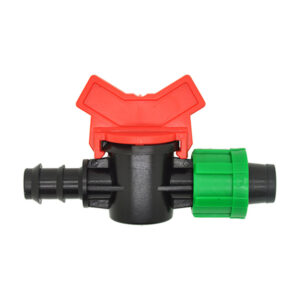The recommended storage conditions for unused drip tape valves typically include:
- Dry Environment: Store drip tape valves in a dry environment to prevent moisture buildup, which can lead to corrosion or deterioration of materials.
- Cool Temperature: Maintain a cool temperature for storage, preferably between 10°C to 30°C (50°F to 86°F). Avoid storing valves in areas subject to extreme temperature fluctuations.
- Protected from Sunlight: Keep drip tape valves away from direct sunlight to prevent UV degradation of materials, especially if they are made of plastics or rubber.
- Well-Ventilated Area: Store drip tape valves in a well-ventilated area to ensure proper air circulation and prevent the buildup of humidity or condensation.
- Avoid Exposure to Chemicals: Keep drip tape valves away from sources of chemicals, drip tape valve solvents, or other corrosive substances that could damage the materials or affect performance.
- Protect from Physical Damage: Store drip tape valves in a location where they are protected from physical damage, such as being crushed or bent, to maintain their integrity and functionality.
- Organized Storage: Store drip tape valves in an organized manner, preferably in their original packaging or in labeled containers, to facilitate easy identification and retrieval when needed.
- Keep Clean: Ensure that drip tape valves are clean and free from dirt, debris, or contaminants before storing them to prevent potential issues during future use.
- Rotate Stock: If storing multiple drip tape valves, implement a first-in, first-out (FIFO) inventory management system to ensure that older valves are used before newer ones to minimize the risk of deterioration over time.
By following these recommended storage conditions, you can help prolong the lifespan and maintain the quality of unused drip tape valves until they are ready for deployment in irrigation systems.

